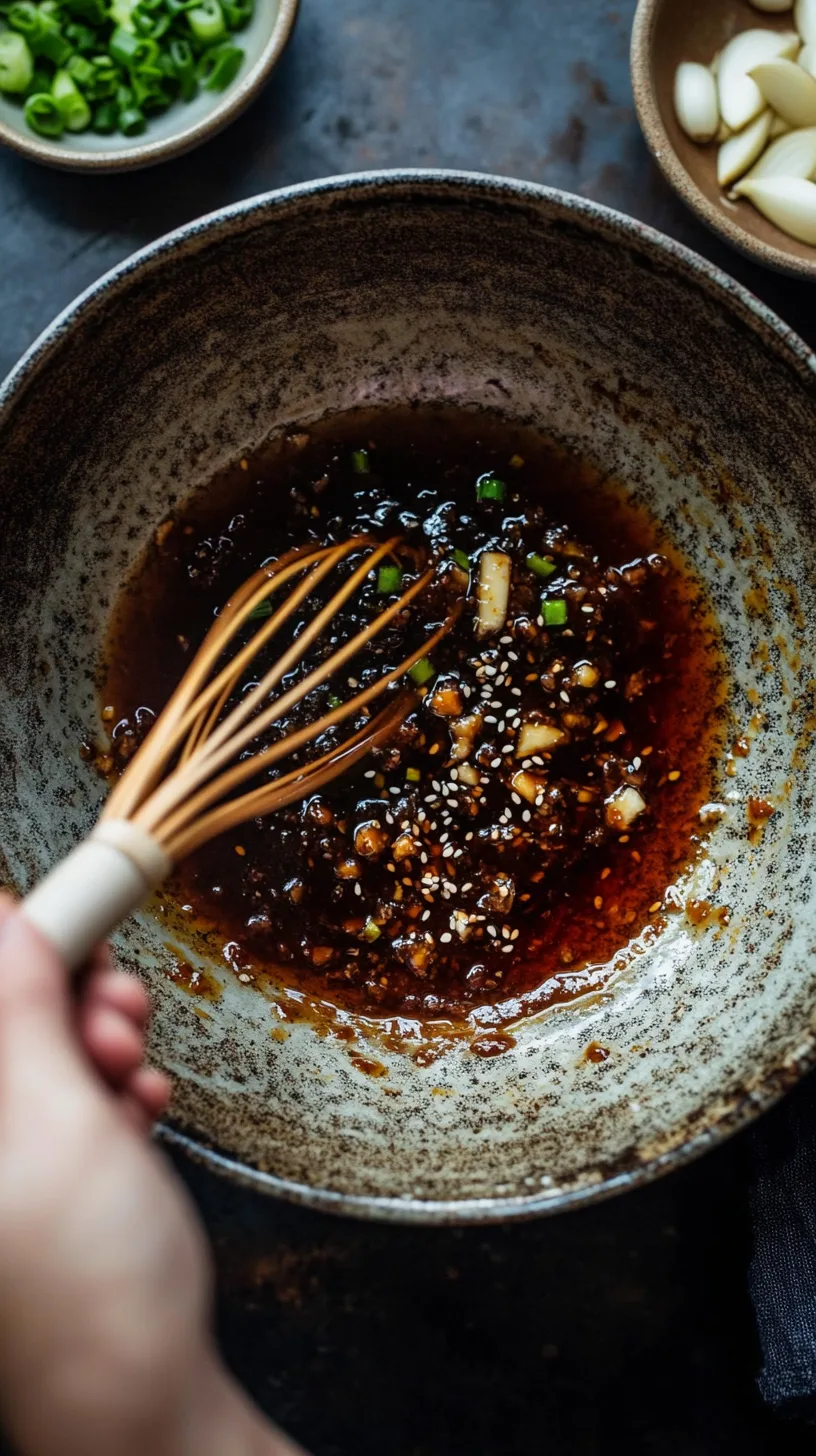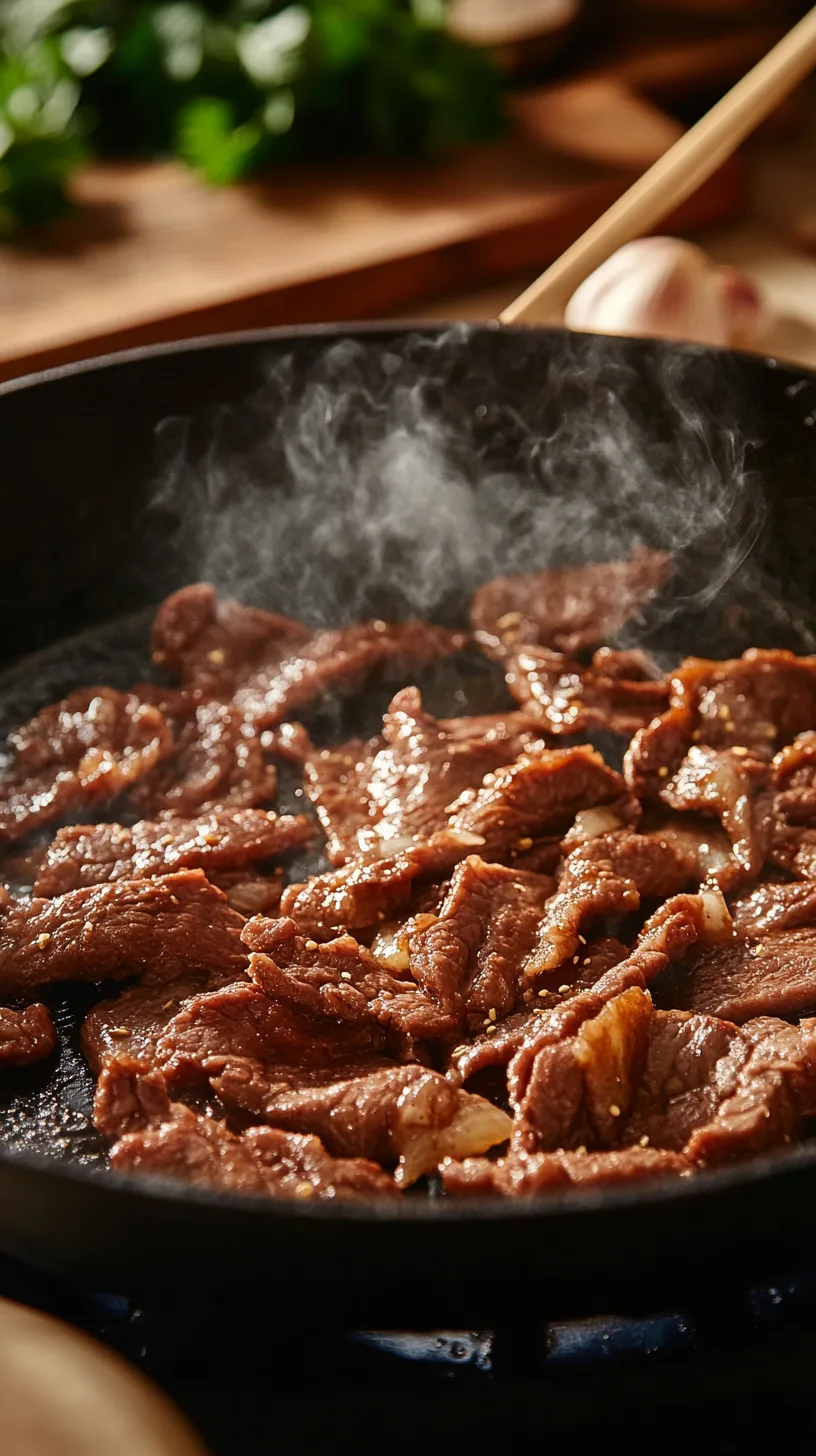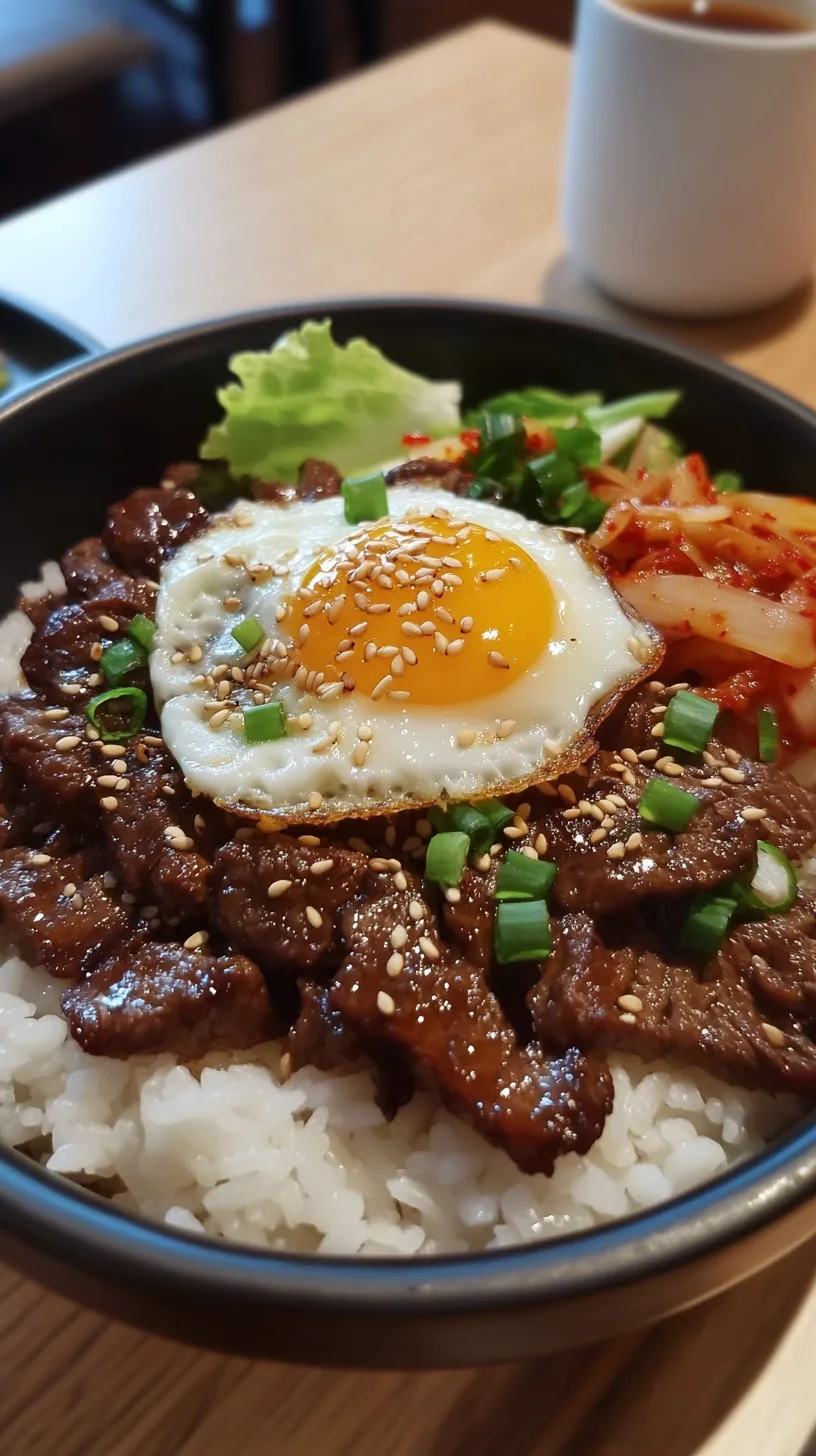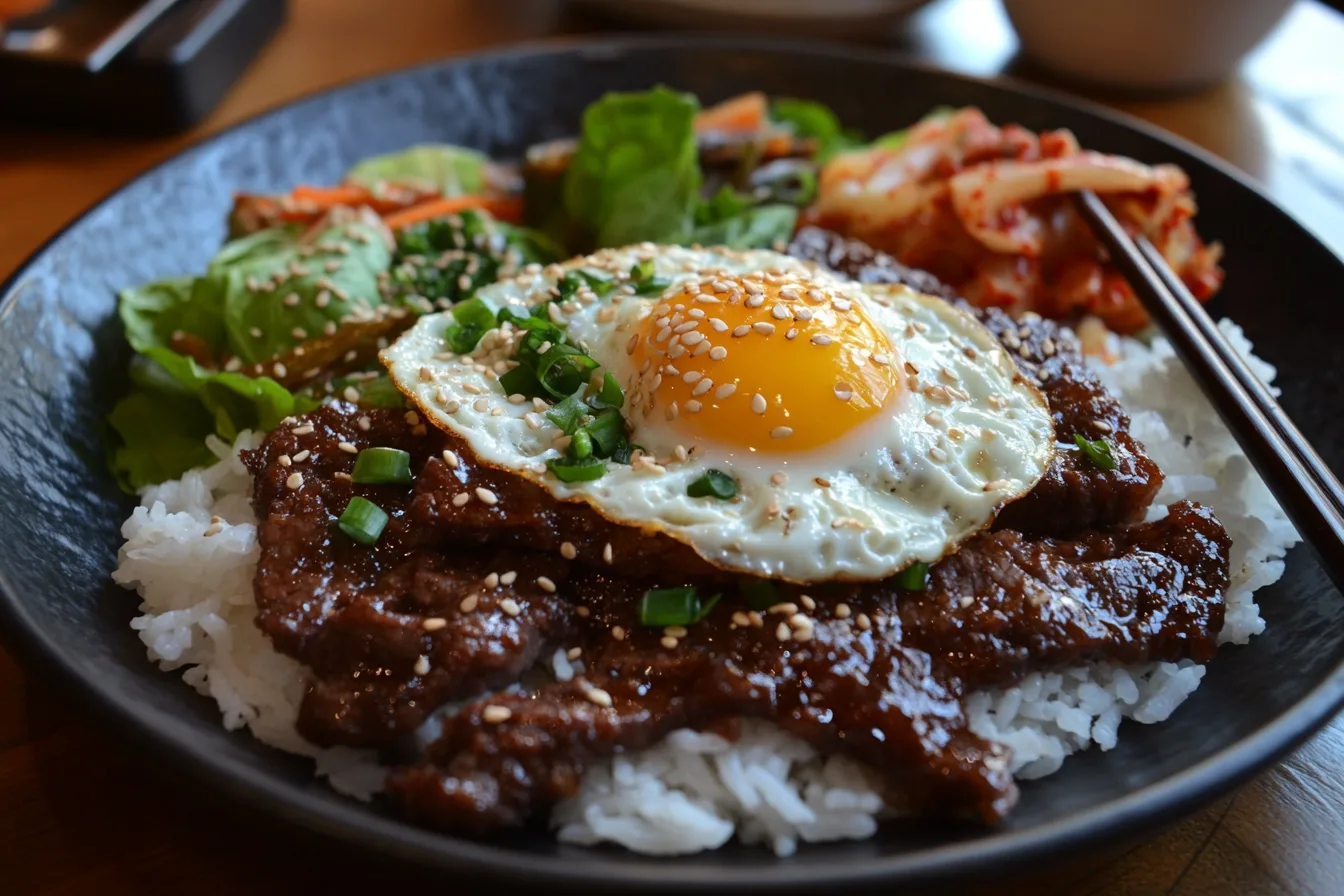You Haven’t Had Korean Beef Bulgogi Like This Before
What Everyone Gets Wrong About Bulgogi (And How to Fix It)
Ever had bulgogi that was just… fine?
Sweet, but not balanced. Cooked, but missing that caramelized, smoky bite.
Happens all the time.
The thing is, making great bulgogi isn’t hard, but small mistakes can turn it into something forgettable.
We’re fixing that today.
No fluff, no overcomplicated steps – just the right cut of beef, a killer marinade, and a trick that takes it over the top. Let’s get started.
What Is Korean Beef Bulgogi?
Bulgogi means “fire meat.” Thinly sliced beef, marinated, then grilled or pan-fried.
It’s slightly sweet, super savory, and a little smoky.
When done right, it’s juicy and melts in your mouth.
Korean BBQ joints often grill it tableside, but you can make it just as good (maybe better) at home.
The key?
The right cut of beef, a properly balanced marinade, and cooking it hot and fast.
Love bold flavors? This Korean BBQ Beef recipe takes grilling to the next level.
The Best Beef for Bulgogi

Not all beef works. Some cuts soak up the marinade beautifully, while others turn chewy or dry.
Here’s what works best:
- Ribeye: Best option. Marbled, tender, tons of flavor.
- Sirloin: Leaner but still great.
- Tenderloin: Super soft, but a little too mild.
- Flank Steak or Brisket: Works, but needs a longer marinade to break down the fibers.
Pro Tip: Stick the beef in the freezer for 30 minutes before slicing. It makes getting those ultra-thin pieces way easier.
The Ultimate Bulgogi Marinade

A great marinade does two things: tenderizes and builds deep flavor. Here’s what you need:
Ingredients:
- Soy sauce (6 tbsp): The base. Salty, umami-packed, essential.
- Brown sugar (3 tbsp): Helps caramelization.
- Sesame oil (2 tbsp): Adds depth and a little nuttiness.
- Garlic (4 cloves, minced): No explanation needed.
- Ginger (1 tbsp, grated): Warms everything up.
- Grated Asian pear (1/2 pear): Secret weapon. Breaks down the meat for that signature tenderness.
- Mirin (2 tbsp, optional): A little extra umami and sweetness.
- Gochujang (1 tbsp, optional): If you want a little kick.
- Black pepper (1/4 tsp): Just enough.
- Green onions (2 tbsp, chopped): Brings some freshness.
- Sesame seeds (1 tsp, toasted): Rounds everything out.
Whisk everything together until the sugar dissolves, then add the beef. Let it marinate for at least an hour. Overnight is even better.
Cooking Bulgogi the Right Way

Now, the fun part.
Two Best Ways to Cook Bulgogi:
- Grill it. This is the best method. High heat, quick cook, a little char.
- Pan-fry it. Get a cast iron skillet screaming hot, then cook in small batches. Don’t overcrowd the pan – you want seared edges, not steamed beef.
Pro Move: Right before it’s done, drizzle a honey-butter mix (1 tbsp melted butter + 1 tbsp honey) over the meat. It caramelizes everything beautifully and gives it a restaurant-quality finish.
How to Serve Bulgogi Like a Pro

Bulgogi is amazing on its own, but here’s how to do it properly:
- Over Rice: Classic, simple, delicious.
- Lettuce Wraps: Grab some romaine or perilla leaves, add beef, a little ssamjang (Korean dipping sauce), and maybe a slice of garlic.
- With Banchan: Korean side dishes like kimchi, pickled radish, and seasoned spinach take it to another level.
- Fried Egg On Top: Trust us, just try it.
Ingredient Swaps & Substitutions
Can’t find everything? No problem.
- Asian pear → Red apple: Does the same job of tenderizing.
- Mirin → Rice vinegar + 1/2 tsp sugar: A decent swap.
- Gochujang → Sriracha: Not identical, but close enough.
- Brown sugar → Honey: Different sweetness but works great.
Nutrition Breakdown
Bulgogi is packed with protein, but also has sugar in the marinade. Here’s the rough breakdown per serving:
- Calories: ~450 kcal
- Protein: ~30g
- Carbs: ~30g
- Fat: ~20g
Korean Beef Bulgogi Recipe Card
Print
Korean Beef Bulgogi Recipe
- Prep Time: 15 minutes
- Marination Time: 1 hour (or overnight for best results)
- Cook Time: 10 minutes
- Total Time: 1 hour 25 minutes
- Yield: 4 servings 1x
- Category: Main Course
- Method: Grilling or Pan-frying
- Cuisine: Korean
Description
Bulgogi, meaning “fire meat” in Korean, is a classic dish featuring thinly sliced beef marinated in a savory-sweet sauce, then grilled or pan-fried to caramelized perfection. This recipe includes all the traditional elements with a slight twist—a drizzle of honey butter during cooking to enhance caramelization and deepen the umami flavor.
Equipment Needed:
- Sharp knife
- Cutting board
- Mixing bowls
- Whisk
- Grill pan or cast iron skillet
- Tongs
Ingredients
For the Beef:
- 1.5 lbs ribeye or sirloin steak, thinly sliced against the grain
For the Marinade:
- 6 tbsp soy sauce
- 3 tbsp brown sugar
- 2 tbsp sesame oil
- 4 cloves garlic, minced
- 1 tbsp fresh ginger, grated
- 1/2 Asian pear or red apple, grated
- 2 tbsp mirin (optional)
- 1 tbsp gochujang (optional, for spice)
- 1/4 tsp black pepper
- 2 tbsp finely chopped green onions
- 1 tsp toasted sesame seeds
For Cooking & Serving:
- 1 tbsp neutral oil (for cooking)
- 1 small onion, thinly sliced
- 1 carrot, julienned
- 1 cup mushrooms (shiitake or white button), sliced
- 2 tbsp honey butter (1 tbsp melted butter + 1 tbsp honey, mixed)
- Cooked rice, for serving
- Lettuce leaves or perilla leaves, for wrapping
- Extra sesame seeds and sliced green onions, for garnish
Instructions
1. Prepare the Beef:
Place the beef in the freezer for 30 minutes to firm up, making it easier to slice. Use a sharp knife to cut it into thin strips against the grain.
2. Make the Marinade:
In a large bowl, whisk together soy sauce, brown sugar, sesame oil, garlic, ginger, grated pear or apple, mirin (if using), gochujang (if using), and black pepper. Stir in the chopped green onions and sesame seeds.
3. Marinate the Beef:
Add the sliced beef to the marinade, ensuring every piece is coated. Cover and refrigerate for at least 1 hour, or overnight for a deeper flavor.
4. Prepare Vegetables:
While the beef marinates, slice the onion, julienne the carrot, and cut the mushrooms.
5. Cook the Bulgogi:
- Heat a grill pan or cast iron skillet over medium-high heat and add 1 tbsp oil.
- Add the marinated beef in batches to avoid overcrowding. Cook for 2–3 minutes per side until caramelized.
- Just before the beef finishes cooking, drizzle with the honey butter to enhance the caramelization. Toss quickly to coat.
- Remove from the pan and set aside.
6. Sauté the Vegetables:
In the same pan, add the sliced onion, carrot, and mushrooms. Sauté for 3–4 minutes until softened.
7. Serve:
Arrange the cooked beef and vegetables on a plate. Garnish with extra sesame seeds and green onions. Serve with steamed rice or wrap in lettuce/perilla leaves with kimchi on the side.
Notes
- Why the honey butter? This is the original twist—most recipes rely on sugar for sweetness, but honey butter adds an extra depth of caramelization while balancing the saltiness of the soy sauce. It also gives the meat a beautiful glaze.
- Meat selection: Ribeye is the most tender, but sirloin works well for a leaner option.
- Marination tip: The longer, the better! Overnight marination creates the most flavorful and tender beef.
- Spice level: Gochujang is optional but adds a nice kick. Adjust to taste.
- Cooking method: If using a grill, preheat to high heat and cook the beef directly on the grates for a smokier flavor.
Nutrition
- Serving Size: ~450 kcal
- Fat: ~20g
- Carbohydrates: ~30g
- Protein: ~30g
FAQs On Korean Beef Bulgogi
Yep. Use boneless, skinless thighs and reduce the cook time slightly.
Up to 2 days in the fridge, or freeze for up to 3 months.
Nope. A hot pan works just as well.
Sweet, salty, garlicky, smoky, and umami-packed.
Yes! Swap it for honey or a sugar-free alternative.
Not usually, but you can add heat with gochujang or red pepper flakes.
Kimchi. The tang and spice balance the richness of the beef.
The Final Bite
Great bulgogi is about balance – flavor, texture, and just the right amount of char. The next time you’re craving something bold, smoky, and packed with umami, you know what to do. If you love recipes like this and want more straight to your inbox, check out the Simply Delicious Newsletter.
This recipe is brought to you by Ryan Yates, a culinary expert with 20 years in commercial kitchens and currently a working executive chef.
Fire up that grill and enjoy!
Disclosure: This article uses automation for structure, but all insights and advice are provided by Ryan Yates, an experienced executive chef with over 20 years of expertise. Additionally, this post may contain affiliate links, which means we may earn a small commission if you purchase through them, at no extra cost to you. This helps support our work and allows us to keep providing high-quality content.


